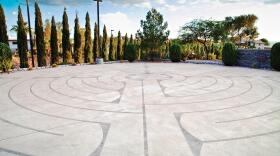For many kids, face masks aren’t about health, they’re about cool
Now everyone’s talking about face masks: Should you wear one? Where can you get them? Before the pandemic, if you saw medical-style masks, they were usually being worn by hypochondriacs, residents of cities with bad air pollution, activists hiding their features from facial-recognition monitors, or travelers in crowded cities overseas.
It turns out that preteens in the valley and elsewhere have been donning face masks, too — not for protection against viruses, but for aesthetic value and social clout. A Bape brand face mask was my son’s birthday and Christmas request. “I wanted one because it was cool,” he says. Although his elementary school is relatively diverse, only the black and white kids wear masks, he tells me. “I would say about 30 percent wear them,” he adds. “And no girls.” While I cannot verify his numbers, I have seen many kids wearing masks at the school bus stops in our neighborhood.
The masks most preteens wear are not to be confused with the surgical type used by doctors. They’re more akin to what bikers wear under their helmets to protect their noses and mouths. Costlier designs appear much like a balaclava cut in half, but my son and his friends prefer the rectangles with a quilted microfiber interior and elastic ear handles. As for their designs, according to my son and his friends, they prefer the Japanese streetwear stalwart Bathing Ape or the Bape design of a shark face with open, glaring teeth against a camouflage backdrop. (If Bape sounds familiar, it might be because hip-hop producer and singer Pharell Williams wore their pastel hoodies and shoes in the early aughts.) Graphic designs of powerful natural predators like tigers and sharks are a big hit among my son’s friends — boys awkwardly trying to find their place in fifth grade.
For my son and his friends, wearing a mask by Bape or Supreme (another brand) confers rebel status. Before Supreme became a global entity, you could only obtain new items by waiting outside its brick-and-mortar stores. The brands are notorious for their scarcity and hype. Which makes the masks that much more special in Las Vegas, where serious strategy is required to obtain one. Counterfeits proliferate online. Kids often pretend to have the real thing — which is unlikely — and it is considered uncool to vigorously inspect someone’s mask for authenticity. That it’s a fake doesn’t deter the boys from wearing it. And, it seems, not a moment too soon.
It’s a new brand of cool, but with practical applications. Face masks can help curtail some inhalation of airborne pathogens and dust. This is an especially useful aspect of the trend in Las Vegas, one of the fastest-warming places on the planet, which means more dust as the sun parches the desert. The Bape mask my son desperately wanted was released during the 2016 winter collection to coincide with the flu season. Now, I borrow it to pick up groceries at Smith’s.
It’s not just kids. At Paris Fashion Week in February, designer Marine Serre had models don masks for the runway. At this year’s Grammy awards, singer Billie Eilish completed a head-to-toe Gucci look with a logo-covered mesh face mask. A photo of Slovakian president Zuzana Čaputová went viral under the hashtag #CoronaDrip as she swore in her new government wearing a crimson boatneck dress with matching shoes and a color-coordinated mask.
Not long ago, when no one could imagine a national shutdown, you could see these masks as just another fad that would fall by the wayside soon enough. But now they are likely to be with us for a long time.








